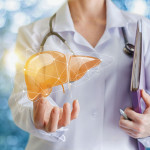Northern California researchers reported on Tuesday that HIV-positive patients are less likely to benefit from lipid-lowering therapy than their HIV-negative counterparts. According to the Kaiser Permanente team, presenting its results in a poster presentation at the 14th Conference on Retroviruses and Opportunistic Infections, the lower response may reflect limitations in the choices of lipid-lowering drugs due to drug interactions between available options and HIV medications.
Bonus Coverage: AIDSmeds founder Peter Staley recently interviewed Dr. Donald Kotler, chief of gastroenterology at St. Luke’s-Roosevelt Hospital in New York, and a longtime researcher of wasting, lipodystrophy, and metabolic problems in people with HIV. Click here to hear more about whether lipid-lowering drugs work well for HIVers. High lipid levels – blood concentrations of cholesterol and triglycerides – are frequently seen in HIV-positive patients, especially those receiving antiretroviral therapy. These lipid elevations, along with other risk factors like obesity, diabetes, family history, and smoking, are associated with an increased risk of cardiovascular disease (CVD).
Medications are widely available to reduce lipid levels and can help reduce the risk of CVD. However, data have been limited with respect to their effectiveness in HIV-positive patients.
To explore whether available lipid-lowering therapies achieve similar responses in HIV-positive patients compared to HIV-negative patients, researchers evaluated data involving thousands patients receiving treatment for increased lipid levels through the Northern California Kaiser Permanente healthcare system.
The researchers looked at the lipid-related factors known to increase the risk of CVD, according to the National Heart, Lung, and Blood Institute’s Adult Treatment Panel (ATP) III: total cholesterol increases, “bad” LDL cholesterol increases, and triglyceride increases.
Increased total cholesterol levels were diagnosed and treated in 907 HIV-positive patients and 5,955 HIV-negative patients. LDL cholesterol elevations were treated in 695 HIV-positive patients and 5,801 HIV-negative patients. Triglcyeride increases were diagnosed and treated in 511 HIV-positive and 4,671 HIV-negative patients.
Approximately 40% of the HIV-positive patients evaluated were on an antiretroviral regimen consisting of a protease inhibitor and two nucleoside reverse transcriptase inhibitors. Between 15% and 19% were on a non-nucleoside reverse transcriptase inhibitor-based regimen.
Among the HIV-negative patients, total cholesterol levels dropped by 22.5% after one year of lipid-lowering therapy. Among the HIV-positive patients, total cholesterol levels dropped by 18.1% after one year of treatment. The difference between the two groups was statistically significant, meaning that total cholesterol reductions were more pronounced among the HIV-negative patients.
There was a slight difference in terms of LDL reductions: a 21.6% drop among the HIV-negative patients and a 23.4% drop among the HIV-positive patients.
As for triglyceride reductions after one year of lipid-lowering therapy, tere was a 53.5% reduction among the HIV-negative patients compared to a 35.9% reduction among the HIV-positive patients. This difference was also statistically significant.
The ATP III guidelines list goals – total cholesterol, LDL cholesterol, and triglyceride levels – that patients should aim for in order to significantly reduce their risk of CVD. According the Kaiser Permanente research, the HIV-infected patients were less likely to achieve these lipid goals, compared to HIV-negative patients, for all categories.
Specifically, patients with elevated total cholesterol levels were 43% less likely to achieve lipid goals if HIV infected. Among those with elevated LDL cholesterol, there was a 19% reduction in the likelihood of meeting the goals among those living with HIV. As for patients with elevated triglyceride levels, HIV-positive patients were 61% less likely to achieve the ATP III triglyceride goals with the use of lipid-lowering medication.
The researchers noted that there were similar rates of statin use among the HIV-positive and HIV-negative groups. However, significantly more HIV-positive, compared to HIV-negative, patients were being treated with either Lipitor (atorvastatin) and Pravachol (pravastatin), whereas HIV-negative patients were more likely to be treated with Mevacor (lovastatin) and Zocor (simvastatin).
While the authors were cautious not to suggest that some statins are more effective at reducing cholesterol than others, they did indicate that the potential for drug interactions between antiretrovirals and lipid-lowering medications limits the ability of HIV-positive patients to try difference drugs to achieve maximum cholesterol and trigycleride reductions.
Source:
Silverberg M, Leyden W, Horberg M, et al. Lipid lowering therapy responses in HIV-positive and HIV-negative dyslipidemic patients enrolled in a large integrated healthcare delivery system [Abstract 814]. 14th Conference on Retroviruses and Opportunistic Infections, Los Angeles, 2007.
Advertisement
Advertisement
Advertisement






Comments
Comments